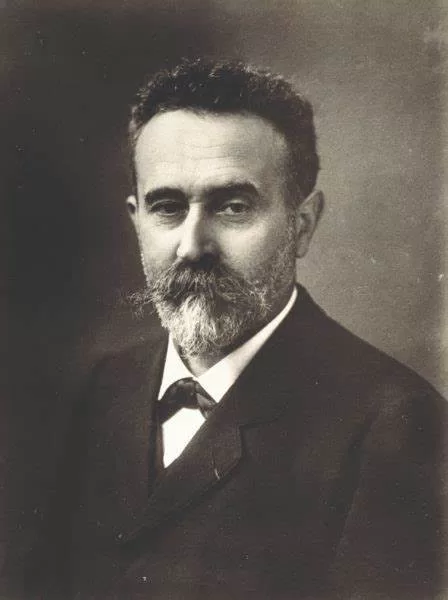Alphonse Bertillon, born on April 22, 1853, in Paris, France, was a notable figure in the field of law enforcement and biometrics research. He is renowned for his contributions to the development of anthropometry and the standardization of mug shots. Bertillon’s innovative approach involved utilizing physical measurements as a means of identifying criminals, pioneering the use of scientific methods in police work. His system, known as the Bertillon system, involved taking precise"Precise" refers to the degree of closeness or consistency between multiple measurements or values taken under the same conditions. It indicates how well these measurements agree with each other, regardless of whether they are accurate Read Full Definition measurements of various body parts, along with capturing photographs, to create a comprehensive identification record. Although the Bertillon system was eventually superseded by fingerprinting, his work laid the foundation for the advancement of forensic identification techniques. Alphonse Bertillon passed away on February 13, 1914, in Paris, leaving a lasting legacy in the field of law enforcement.
- Born: Alphonse Bertillon · April 22, 1853 · Paris, France
- Died: February 13, 1914 (aged 60) · Paris, France
- Known for: Anthropometry, mug shot standardization
- Fields: Law enforcement, biometrics research
Alphonse Bertillon, a notable French police officer and biometrics researcher, played a significant role in the advancement of law enforcement techniques during the late 19th and early 20th centuries. With his groundbreaking work in anthropometry, Bertillon introduced a scientific system of criminal identification based on physical measurements. This article explores the life and contributions of Alphonse Bertillon, from his innovative methods of identification to his controversial involvement in the infamous Dreyfus affair.
The Birth of Anthropometry: A Breakthrough in Criminal Identification
Before Bertillon’s revolutionary approach, law enforcement agencies relied on names or photographs to identify criminals. However, Bertillon recognized the need for a more scientific and accurate method of identification, particularly as the number of captured criminals increased. Motivated by the rising recidivism rate in France, he developed anthropometry, a technique based on precise physical measurements of individuals.
Bertillon’s anthropometric system involved taking measurements such as head length, head breadth, length of middle finger, length of the left foot, and length of the cubit. These measurements, along with standardized photographs known as mug shots, formed a comprehensive record that could be used to quickly access information and images of suspects.
The Evolution of Mug Shots: Bertillon’s Contribution
In addition to his pioneering work in anthropometry, Bertillon is credited with inventing the mug shot as a standardized method of photographing criminals. While photographs of criminals had been taken since the 1840s, it was Bertillon who standardized the process in 1888. His meticulous approach ensured consistent and accurate documentation of individuals, aiding law enforcement in the identification and tracking of suspects.
Controversy and the Dreyfus Affair
Despite his significant contributions to forensic science
Bertillon testified as a handwriting expert in the case and claimed that Dreyfus had written an incriminating document known as the “bordereau.” However, his convoluted and flawed evidence
The scandal surrounding the Dreyfus affair eventually led to the overturning of the verdict and Dreyfus’s acquittalAcquittal- A courtroom verdict in which a criminal defendant has not been found guilty Read Full Definition in 1906. However, Bertillon’s involvement in this controversial case cast doubt on the reliability of his methods and diminished his standing as a respected forensic expert.
Legacy and Limitations of the Bertillon System
Despite the flaws highlighted by the Dreyfus affair, the Bertillon system remained influential in the field of criminal identification for several decades. The system’s reliance on scientific measurements and standardized photographs set a foundation for future advancements in forensic science.
However, the Bertillon system also had limitations. It was primarily designed for adult males and may not have been applicable to women and children. Additionally, the system’s reliance on physical measurements alone made it susceptible to errors and challenges in cases involving individuals with similar measurements.
Bertillon’s Impact on Policing: The Minneapolis Connection
Beyond his contributions to criminal identification, Bertillon’s methods had an impact on policing practices. In Minneapolis, Minnesota, during the late 19th and early 20th centuries, the local police department utilized the Bertillon system to identify and document the crimes of black women working as prostitutes, who became known as “alley workers.”
The system provided a tool for categorizing and policing these women, but it also led to a response from the alley workers. Many of them used aliases, with “Mamie” being a common pseudonym. The St. Paul police department archives still hold the only surviving photo of an alley worker, Mamie Knight, taken during the era of the Bertillon system.
Alphonse Bertillon’s Enduring Impact
Alphonse Bertillon’s contributions to the field of forensic science and law enforcement cannot be denied. His pioneering work in anthropometry and the standardization of mug shots laid the foundation for modern techniques of criminal identification. While the Dreyfus affair stained his legacy, Bertillon’s innovative methods transformed the way law enforcement agencies approached the identification and tracking of criminals.
Despite the limitations of his system, Bertillon’s dedication to scientific rigor and his quest for more accurate methods of identification paved the way for future advancements in forensic science. Today, his name stands as a testament to the crucial role played by early pioneers in shaping the modern landscape of criminal justice.











